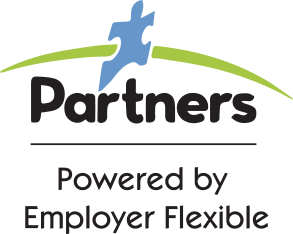Workplace Guidelines: Handling Employee Grievances

It is unrealistic to expect that your employees will never have any complaints about their jobs or workplace conditions.
It is realistic, however, for your company to have policies and procedures in place to handle employee grievances in a timely and professional manner, which can go a long way to bolstering your employee retention and workplace culture.
“Employee complaints are inevitable even in the most work-friendly companies,” says the Edward Lowe Foundation. “Some complaints are quickly and easily resolved, while others take more time, energy and patience.”
Employee Grievances: Complaints Made Formal
What exactly is an employee grievance vs. a complaint?
Indeed.com defines a grievance as “a formal employee complaint that is filed when an employee or group of employees is negatively affected by violations of workplace policies or contract terms.”
Grievances, according to Indeed, can relate to any of the following aspects:
- Financial
- Social
- Physical
- Emotional
Examples of specific grievances could be:
- Bullying and harassment
- Discrimination
- Workplace health and safety
- Work environment
- Relationships in the workplace
- Organizational changes
- Terms and conditions of employment
While a complaint is typically delivered informally and verbally, a grievance can be seen as an escalation of a complaint that is delivered formally, usually in writing.
Why You Need to Take Employee Grievances Seriously
The Texas Workforce Commission (TWC) says it is good business practice for employers to state all their policies and procedures in an employee handbook.
“Every aspect of the employment relationship should be addressed,” says the TWC.
Your employee handbook should spell out employer expectations, such as attendance, job requirements, drug policy, etc. as well as employee expectations, such as compensation, benefits, equal employment opportunity, right to privacy, and grievance procedures.
How you handle employee grievances can affect your company’s bottom line.
“A prompt response that leads to quick resolution of a complaint or grievance will boost employee morale and productivity and can forestall costly legal action,” says the Edward Lowe Foundation.
What happens if employee grievances are not addressed?
“If not resolved on time, it can lower employee morale, create inefficiency, and increase absenteeism. In short, your ability to handle grievances of employees can directly impact overall productivity at work,” says Vantage Circle.
Survey Says: Top Employee Grievances
Vantage Circle says that HR should be equipped to understand and handle employee grievances, which can run from minor issues to major problems, all of which need to be taken seriously.
“Employee grievance can be defined as the discontentment caused by the gap between what your employees expect and what they fail to get. It may or may not be justified but needs to be tackled very carefully,” says Vantage Circle.
Vantage Circle says some of the leading causes of employee grievances are:
- Undesirable working conditions in physical terms
- Changes without prior notice
- Poor employee relations
- Improper wage adjustments
- Dissatisfactory office policies in case of:
o Promotion
o Demotion
o Transfer
o Discharge
o Leaves
o Overtime
- Violation of laws
- Inadequate safety, health, and welfare amenities
- Labor-management hostility
- Incidences of workplace favoritism and nepotism
- Lack of organizational discipline
Putting Your Employee Grievance Policy in Place
It is important for your employee grievance plan to be in writing in your employee handbook.
Steps that you can use in an employee grievance plan:
- Create a Framework: Everything should be spelled out. Procedures and timelines need to be established so that employees know what to expect when filing a grievance. This framework should include which HR staff oversee handling grievances.
- Listen to the Employee: Often a complaint can be aired and handled without moving to a formal grievance process so it's important to listen to the employee and hear their concerns. The employee should then have the option to file a formal grievance in writing.
- Investigate: Once the grievance has been received. Notify all parties involved and start an investigation into the complaint.
- Formal Meeting: After the initial investigation, the employee and other parties involved in the grievance should attend a formal meeting where they can present their side of the situation. Minutes should be kept of this meeting.
- Decide and Act: After all facts are reviewed from your investigation and all parties are heard in the formal meeting – decide on an outcome and notify all involved.
- Appeal Process: An appeals process should allow the employee to contest the decision in writing with a reason for not accepting the outcome. Another company representative should handle this appeal and decide on the outcome after more investigation and an appeal meeting with all involved.
- Review: The grievance process is a window into your company culture. Always review grievances and their outcomes, to find action your company can take to tackle the root cause of issues that result in complaints.
We help companies deal with these issues every day. We have processes and frameworks already established. Connect with us if we can help you and your small business with any human resources related issue.



